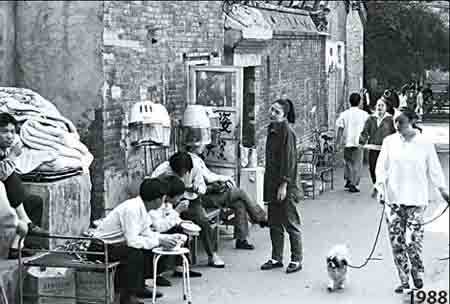
|
BIZCHINA> Wen's Lens
 |
|
Related
Shear delights
By You Nuo (China Daily)
Updated: 2008-10-20 11:40

 Each nation has unique ways of spending time and money. Americans like to invite friends to evening parties in their homes, while Chinese seem to prefer multi-course, if not wasteful, banquets in restaurants. Many Americans also like to exercise in gyms. While gyms are becoming increasingly popular in China, many Chinese prefer a massage. Other than the massage parlors that don't exactly provide the service they publicly advertise, a straight massage does provide the kind of relaxation that seems to soothe the physical systems in this part of the world. But the distinction wasn't always so clear. A few decades ago, restaurant banquets were rare scenes in China. Family eating together, and with friends, was far more common. As recently as in the 1980s, going to the hair stylist was not necessarily because one wanted to look more stylish. More often than not it was simply because the customer could no longer bear the length of his or her hair. While there were hairstyles, they were all very basic and with just a few choices. Our black-and-white photo, taken by Wang Wenlan in 1988 in a Beijing hutong (narrow street), recorded a quite common phenomenon in those days, namely the streetside barber service. And this one, with a few pieces of equipment for making curly perms outdoors, certainly wasn't the shabbiest choice. There were individuals with some hair-cutting skills waiting for business on roadsides with just a pair of scissors and a wooden stool. All the customers wanted from those simple barbers was the quickest possible service at the lowest possible price. But in large cities today one seldom sees them. Instead, hair stylists tend to offer their services, costing between 20 and 30 yuan minimum in Beijing (including half an hour shoulder massage), from newly decorated shops. For picky customers one trip can easily exceed 100 yuan. It's a trendy business indeed. A search on Baidu.com, a Chinese language search site like Google, one gets 135,000 results after entering "beauty salon and hair stylist industry" (meirong meifa ye in Chinese pinyin). In 2002, according to China Youth News, the Chinese beauty industry in its broadest sense, had grown so large that it sustained more than 11 million jobs. It had an annual revenue of 168 billion yuan, including the sales of merchandise, or more than 200 times the 1980s. In a related area, despite the domination of international brands, the number of Chinese cosmetics makers reported by an industry website in 2008, was more than 4,000, with a combined revenue of 120 billion yuan. It was not until the beginning of the 21st century that another wave rose. It is the pedicure as an extension of the value chain of the beauty/massage industry. Pedicure facilities are easily spotted in middle-class residential areas and in areas surrounding expensive office buildings. Hence, our color photo of pedicure specialists. A session lasts around one hour (although one can opt for a half hour), and usually costs about 100 yuan. It is no longer a utilitarian service, as the roadside hair-cut was in the 1980s. It's simply for pure relaxation and enjoyment.
(For more biz stories, please visit Industries)
|